When looking at the Hisense E7NQ PRO in everyday use, it is immediately clear that this is a television designed with a wide audience in mind. The picture, while not immediately striking, gains a lot after proper calibration. The colours then appear more natural, and the brightness at around 500 cd/m² makes it easy to comfortably watch in a sunny living room. The wide viewing angles offered by the IPS panel are an added bonus – we no longer have to fight for the best spot on the couch. Dolby Vision can enhance the overall experience, while in SDR mode the TV displays a really pleasant picture. Sports and gaming fans will find even more reasons to be satisfied here. The high refresh rate (144 Hz) ensures smooth movements of the ball across the field, and low latency, VRR, ALLM, and compatibility with G-Sync and Dolby Vision in games caters to those who value responsiveness and immersive gaming experiences. Because of all this, the E7NQ PRO becomes an interesting option for computer gamers as well. The VIDAA system works quite efficiently – there are plenty of apps available, although it lacks typical music apps like Spotify or Tidal. However, you can count on recording, AirPlay, mirroring, and decent compatibility with wireless devices. Yes, there are some shortcomings and imperfections – especially regarding subtitle support from USB or perfect management of brightness and contrast, and the lack of HGIG may disappoint the most demanding gamers. When we gather all impressions and experiences, the E7NQ PRO emerges as a device that will perform well in many situations. It has its advantages – such as wide viewing angles, pleasant picture after calibration, plenty of additional features, and great motion fluidity in sports or gaming. At the same time, it's worth remembering that this is not a television intended for those seeking perfect experiences for evening screenings in complete darkness. In low light, the shortcomings of contrast and black levels become more obvious, which is why we suggest that those planning mainly evening viewing consider alternatives among competitors. Nonetheless, as a versatile solution for everyday use – from watching television in a bright living room to playing console and computer games – the E7NQ PRO performs quite solidly.
- Matching (Score)
- Our verdict
- TV appearance
- Where to buy
- Contrast and black detail
- HDR effect quality
- Factory color reproduction
- Color reproduction after calibration
- Smoothness of tonal transitions
- Image scaling and smoothness of tonal transitions
- Blur and motion smoothness
- Console compatibility and gaming features
- Input lag
- Compatibility with PC
- Viewing angles
- TV efficiency during daytime
- Details about the matrix
- TV features
- Apps
- Playing files from USB
- Sound
Hisense E7NQ PRO vs Hisense U7Q PRO
Direct compare
U7Q PRO / U78Q PRO


Panel type: LCD IPS
Resolution: 3840x2160
System: VIDAA
Model year: 2024
Complete the survey to find out the result

Panel type: LCD VA
Resolution: 3840x2160
System: VIDAA
Model year: 2025
Complete the survey to find out the result

Overall rating
7.0
7.4
Movies and series in UHD quality
6.4
7.2
Classic TV, YouTube
6.3
7.1
Sports broadcasts (TV and apps)
6.6
6.7
Gaming on console
8.0
8.3
TV as a computer monitor
7.6
8.2
Watching in bright light
6.2
6.2
Utility functions
8.9
9.4
Apps
7.7
7.7
Sound quality
7.0
7.8
Complete the survey to find out what fits your preferences
Advantages
Wide viewing angles thanks to the IPS matrix
Good colour potential after calibration
High refresh rate (144 Hz), VRR, ALLM, and G-Sync for gamers
Support for Dolby Vision
A good number of additional features (recording, AirPlay, mirroring)
Support for key audio formats (Dolby Atmos, DTS:X)
Relatively low input lag
Excellent contrast and black - true Mini-LED backlighting with VA panel (65")
Very good motion fluency - 4K@165 Hz panel
Very high HDR brightness - even above 1500 nits
Perfect for gaming - Low input lag, VRR, ALLM, 4x HDMI 2.1, 288Hz at 1080p.
Vidaa operating system has many features like Airplay, USB recording
Outstanding quality of tonal transitions
Disadvantages
Average contrast and black levels
Issues with subtitle playback from USB
Missing HGIG support
In some scenes, issues with HDR brightness management
Unavailability of some popular music apps (Spotify, Tidal)
No support for HGiG
Average viewing angles
Missing apps on the VIDAA platform
Our verdict
The U7Q PRO is a TV that makes it clear within minutes: "speed is what matters here". Hisense has surprised us with how much they’ve packed into a device that doesn’t cost a fortune. A refresh rate of 165 Hz in 4K, and even 288 Hz in Full HD – not long ago, such figures were reserved exclusively for top-end gaming monitors. And here we have a mid-range TV with almost a full suite of features for gamers, confidently throwing down the gauntlet to much pricier competitors. But it doesn’t stop at speed. The U7Q PRO also boasts a very bright screen, peaking at an impressive 1500 nits. Like every Mini-LED, it has its typical "moods", occasionally exaggerating the image, but the overall visual effect remains very positive – especially in HDR content. It’s also worth mentioning the Vidaa operating system – fast, intuitive and equipped with features like AirPlay, a voice assistant, and a web browser. While it doesn’t offer the full range of apps found on Android, in everyday use the system performs exceptionally well. So, why is it “almost” perfect for gamers? It just lacks the HGiG feature, which allows for precise adjustment of brightness levels in HDR games. It’s a minor drawback, but it can be significant for console purists. Nevertheless, the U7Q PRO remains a very solid proposition – and a testament to the fact that Chinese manufacturers have not only caught up with competitors from Korea and Japan, but in some aspects have even begun to overtake them.
TV appearance




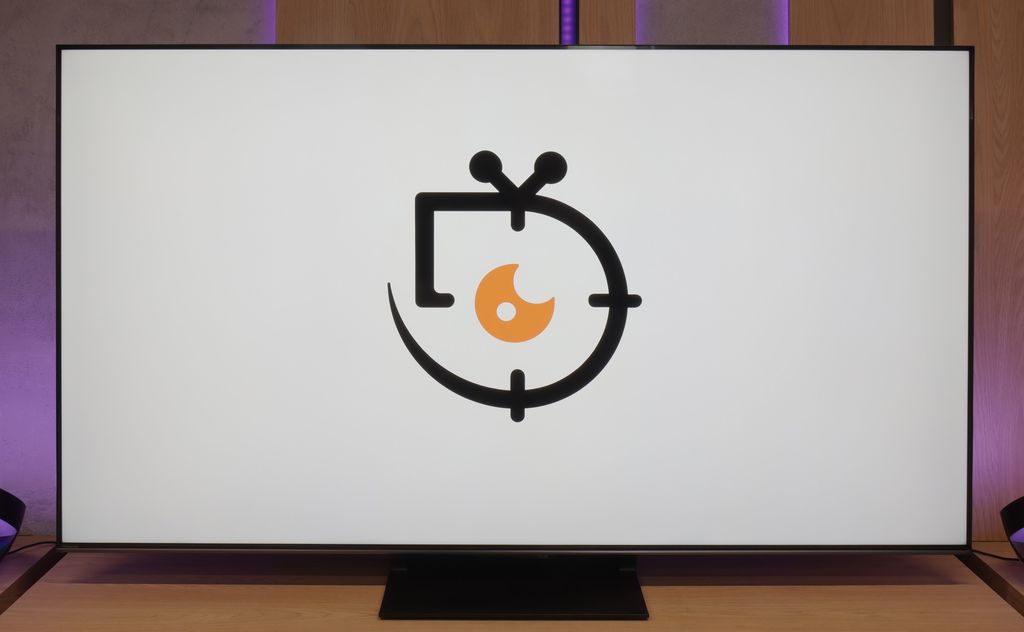
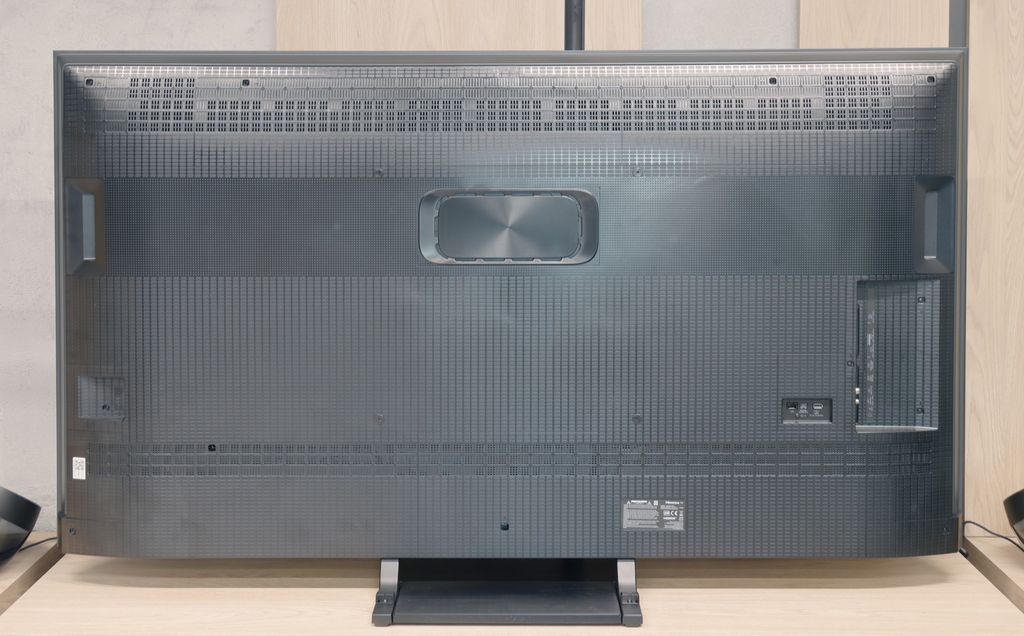
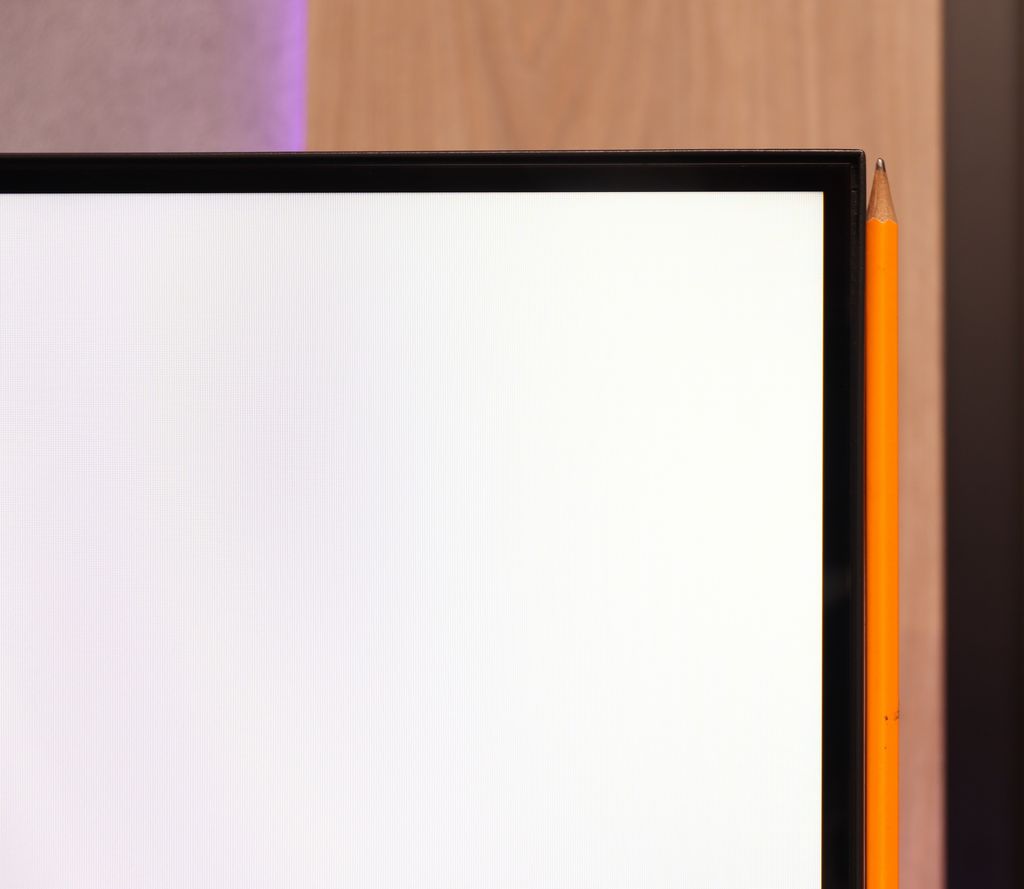

Contrast and black detail
5/10
8/10
Local dimming function: Yes, number of zones: 32 (4 x 8)
Local dimming function: Yes, number of zones: 560 (20 x 28)
Contrast:

Result
7,850:1

Result
4,150:1

Result
4,400:1

Result
2,500:1

Result
1,550:1

Result
340,000:1

Result
62,850:1

Result
42,000:1

Result
11,100:1

Result
7,500:1
Halo effect and black detail visibility:

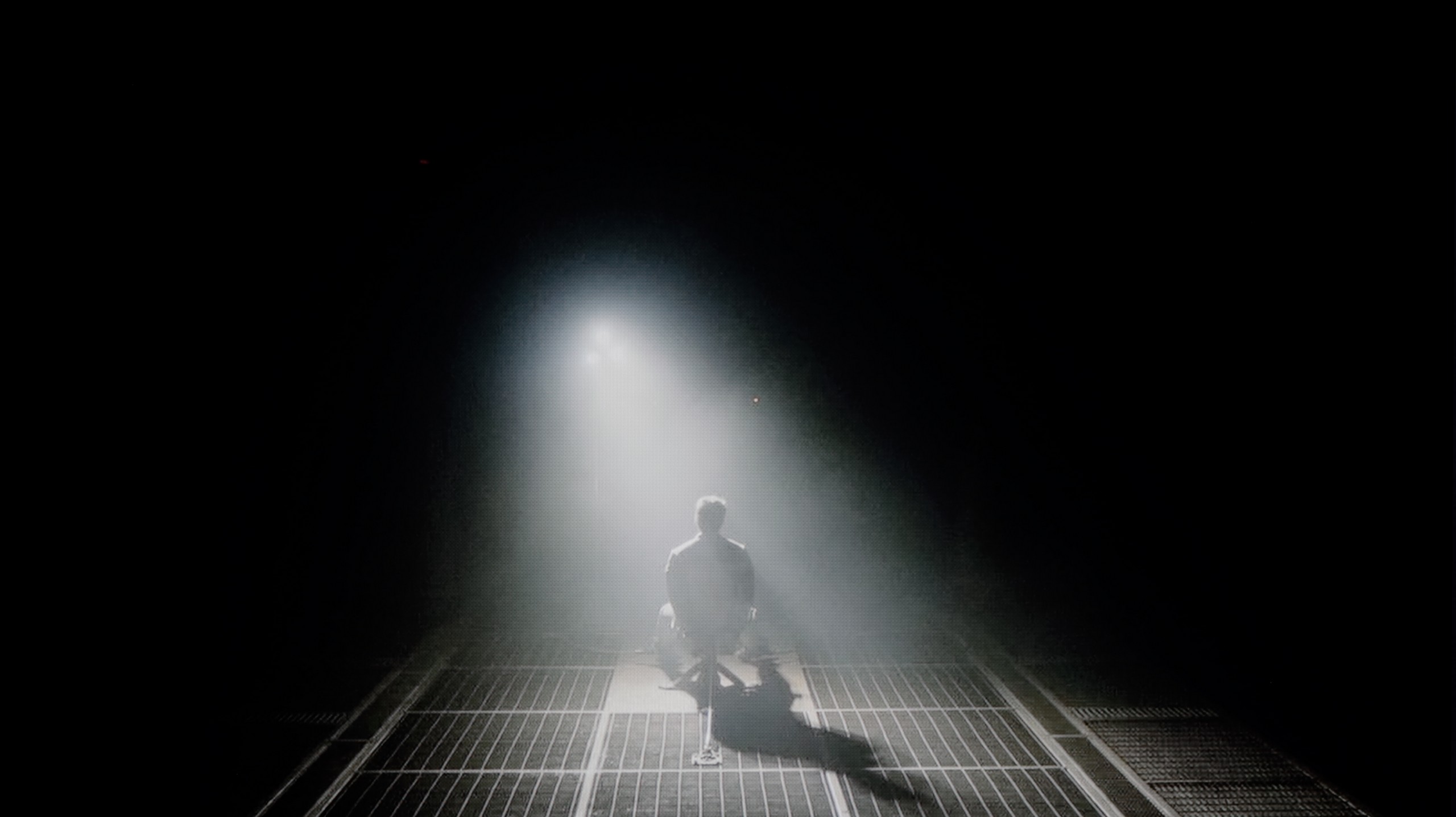
The Hisense E7NQ PRO we've tested, in the 65-inch version, uses an IPS panel, which unfortunately isn't known for high contrast. As a result, black appears slightly "washed out" and occasionally takes on a silvery hue, which is clearly visible in our pictures. The manufacturer tried to address this by equipping the TV with local dimming functionality. Unfortunately, in this 65-inch model, we only have 32 zones available, which, while it helps a bit, is definitely not enough to achieve truly impressive results – especially since the panel itself cannot provide a cosmic depth of black.
During testing, we observed highly varied results. Under optimal conditions, it managed to reach around 7800:1, which can be considered decent; however, in more challenging scenes, the contrast dropped to around 2000:1. Such values are at best average and simply do not befit a TV in this price range. Ultimately, while local dimming somewhat salvages the situation, what’s really lacking here is true deep, inky black and contrast that would leave a greater impression on us.
Hisense U7Q PRO is a mini-LED television with a VA panel and – in the version we tested, 65 inches – 560 local dimming zones. It's worth noting straight away that this number varies depending on the size – larger diagonals get more zones, while smaller ones get fewer accordingly. But regardless, the dimming system itself works really solidly here.
The contrast is genuinely very good for the price range in which this model is placed. In optimal conditions, the U7Q PRO can achieve results close to six-figure values, which until recently was reserved for much higher-end equipment. In practice – in scenes like the one from the film Oblivion – the picture looks stunning. With the lights on in the room, it's hard at first glance to distinguish this TV from organic screens. Of course, it’s still an LCD with local dimming, so compromises are unavoidable. In more challenging scenes, where there are many small light sources, the U7Q PRO tends to dim too aggressively. Instead of a slight degradation of black – some details that should be visible disappear. This is a side effect of the algorithm, which firmly adheres to the principle of “black should be black,” even at the expense of subtle elements in the picture.
But nonetheless – contrast is one of the stronger points of this model.
HDR effect quality
5.1/10
6/10
Luminance measurements in HDR:

Result
408 nit

Result
299 nit

Result
446 nit

Result
215 nit

Result
527 nit

Result
1129 nit

Result
323 nit

Result
721 nit

Result
267 nit

Result
736 nit
Scene from the movie “Pan” (about 2800 nits)

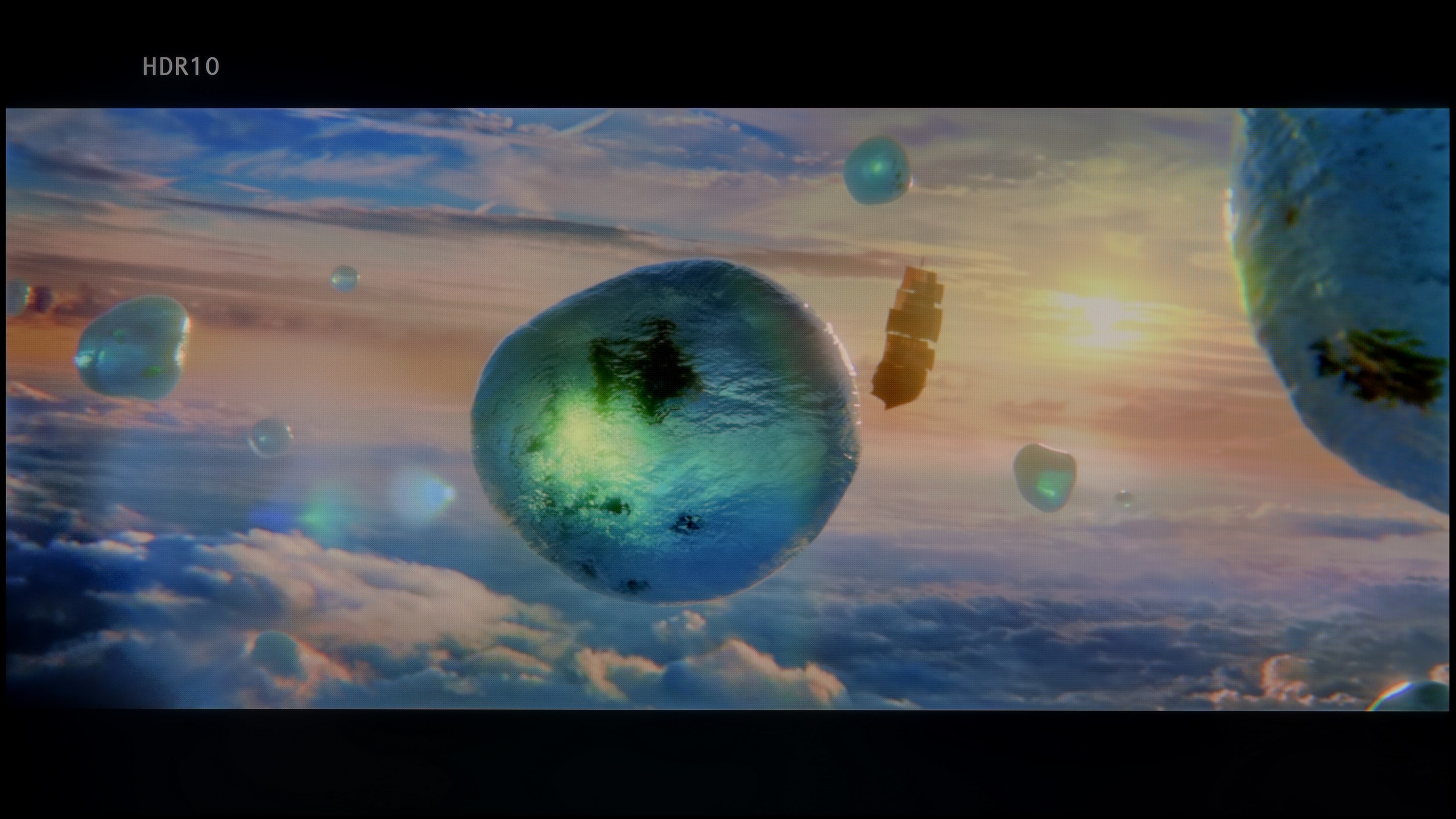
Scene from the movie “Billy Lynn” (about 1100 nits)


Static HDR10


Dynamic: Dolby Vision
Dynamic: Dolby Vision


HDR luminance chart:
Hisense U7Q PRO
Luminancja HDR
Luminance of RGB colors
Hisense E7NQ PRO
Luminancja HDR
Luminance of RGB colors
Based on the luminance chart, which indicates around 550 nits, it can be considered that Hisense E7NQ PRO theoretically has the potential to somewhat "enchant" us with its HDR image. Testing various scenes from movies, we noticed that the television continually tries to balance between maintaining appropriate brightness and preserving the deepest blacks. In favourable conditions – such as in a scene from “The Meg”, where the screen is flooded with bright light – this brightness can indeed impress us. At such moments, we feel that HDR actually adds that "something" to the image. Unfortunately, when difficult shots with fine, bright elements on a dark background appear on the screen, the situation looks much worse. Brightness then drops to 200-300 nits, which is definitely too little to really distinguish HDR from standard SDR.
It is clear that the television is trying, but the hardware limitations – mainly the small number of local dimming zones – prevent it from fully spreading its wings. The end result can therefore be quite inconsistent and as average as the contrast tests. On the plus side, it deserves credit for its impressive coverage of the DCI-P3 colour gamut at 97%. This allows the television to present a truly wide range of colours, which, in the right scenes, can give us at least a glimpse of the real HDR effect. It’s just a shame that the whole picture isn't complemented by better control of brightness and contrast.
U7Q PRO is truly a bright television. In synthetic tests, it achieved over 1500 nits, which is an outstanding result for this price bracket. Such brightness – at least in theory – allows it to display HDR content as intended by the creators, even in more demanding scenes with strong lighting. In practice, it performs very well, but not always perfectly. In bright scenes with large areas – like the test screen with intense sunlight from the film "Pan" – the U7Q PRO makes a huge impression. It can even dazzle with its light, which is definitely an advantage in the context of HDR content. Unfortunately, it doesn’t always manage to maintain this when there are many small bright details on a dark background. In such moments, the local dimming algorithms tend to dim some bright elements to maintain good blacks – and the side effect is that some details simply vanish from the frame. This is a classic compromise in mini-LED televisions – and the U7Q PRO is no exception. With such a large number of dimming zones, however, one could have hoped for a slightly more mature algorithm responsible for their control. Fortunately, the overall perception of HDR content is very positive. The U7Q PRO is not only bright but also colourful, thanks to the PFS LED (QLED) coating, the coverage of the DCI-P3 colour palette is at 95%, and BT.2020 around 73%.
Factory color reproduction
5/10
6.2/10


Factory Mode
After calibration


Factory Mode
After calibration
When we took our copy of Hisense E7NQ PRO out of the box, we immediately started checking the available picture modes. Among them, the Filmmaker mode seemed the most promising, although it wasn't without its flaws. With standard SDR content, we noticed a clear tendency to overemphasise red, making the picture appear unnaturally warm. This was particularly evident in the comparison photo attached below. Conversely, when we switched to HDR content, the situation took a turn in the opposite direction. This time, blue was dominant, and there was hardly any red, resulting in a cool, at times almost "store-like" appearance — although not as drastic as in modes specifically designed for showcasing in displays. As a result, in our tests assessing colour reproduction, these disturbances in colour balance led to significant errors.
Additionally, the television had trouble reproducing brightness characteristics. At lower resolutions, it clearly brightened the darkest elements of the image, and with HDR content, the brightness curve (eotf) simply wouldn't align as it should. Initially, the television excessively darkened the smallest details, only to then over-brighten larger areas. Fortunately, the E7NQ PRO provides us with a lot of calibration tools, so knowing there was potential within it, we decided to take matters into our own hands and try to set it up to eliminate these issues.
We tested the U7Q PRO in the best possible picture mode that this model offers – Filmmaker Mode. And indeed, this mode performs the best in terms of colour reproduction. But that doesn’t mean it’s perfect. In our test unit, both in SDR and HDR content, the image had a slightly cooler tone. The white balance was shifted towards blue, which made the overall image feel a bit "cooler." It may not be glaring, but it is definitely noticeable – particularly on white backgrounds, which instead of being neutral, seemed slightly bluish. Additionally – as we mentioned earlier – the television has a tendency to slightly brighten and oversaturate the image, which is also confirmed by the gamma and EOTF charts. All of this together means that without calibration, the image may appear somewhat unnatural – too cool, with slightly exaggerated dynamics. That’s why we decided to perform our own calibration – and you can see its effects and charts below.
Color reproduction after calibration
7.1/10
7.5/10




Thanks to the tools available in E7NQ PRO, we've managed to squeeze a pretty decent image out of it, especially with lower quality content. After fine-tuning the white balance of the SDR materials, the colours look much more natural, and what we see on the screen seems closer to the vision the producer intended to present. Additionally, we've improved the brightness characteristics (Gamma), so the TV no longer tends to over-brighten, and everything looks noticeably better than before our intervention.
With HDR materials, we also achieved some improvements, although it's not as rosy here. Yes, the white balance has approached an acceptable level, but the problem lies elsewhere. It's about the EOTF curve, which is how the TV manages brightness and tonality of the image. At first glance, one might think that the biggest issue concerns only the mid-tones, which are overly brightened. However, after more detailed testing and activating the EOTF curve visualisation filters, it becomes clear that the receiver has a tendency to brighten the entire screen. This seems to be a limitation due to the small number of local dimming zones and generally modest brightness management capabilities. Such hardware limitations are simply insurmountable. Nonetheless, after our calibration, the image is noticeably better than at the start. One just needs to be aware that in terms of contrast and brightness management, this model has its limits, which even a good calibration cannot fully overcome.
Thanks to calibration, we've managed to tame the white balance in SDR and HDR content. For SDR material, the effect is really quite good – the image becomes neutral, cohesive, and simply pleasant to watch. Everything looks the way it should.
HDR performs a bit worse. Although the white balance looks correct and overall the image gains naturalness, unfortunately, the delta E errors are still noticeable. Why? Because Hisense's U7Q PRO model does not give us full control over how the television manages brightness in HDR mode. And this is where the limitation arises. When we look at the EOTF curve for HDR content, it clearly shows what we mentioned earlier – at the beginning of the graph, there’s a noticeable drop, meaning the television darkens the smallest portions more than it should. On the other hand, those brightest elements can be overly bright. As a result, some details are lost, others are too aggressive, and overall control over brightness doesn't always align with what we’re trying to achieve during calibration.
Does the image look better after calibration? Definitely, yes, in terms of colour. But when it comes to brightness management in HDR, one must accept that the Hisense U7Q PRO will still do it in its own way.
Smoothness of tonal transitions
9.2/10
9.5/10







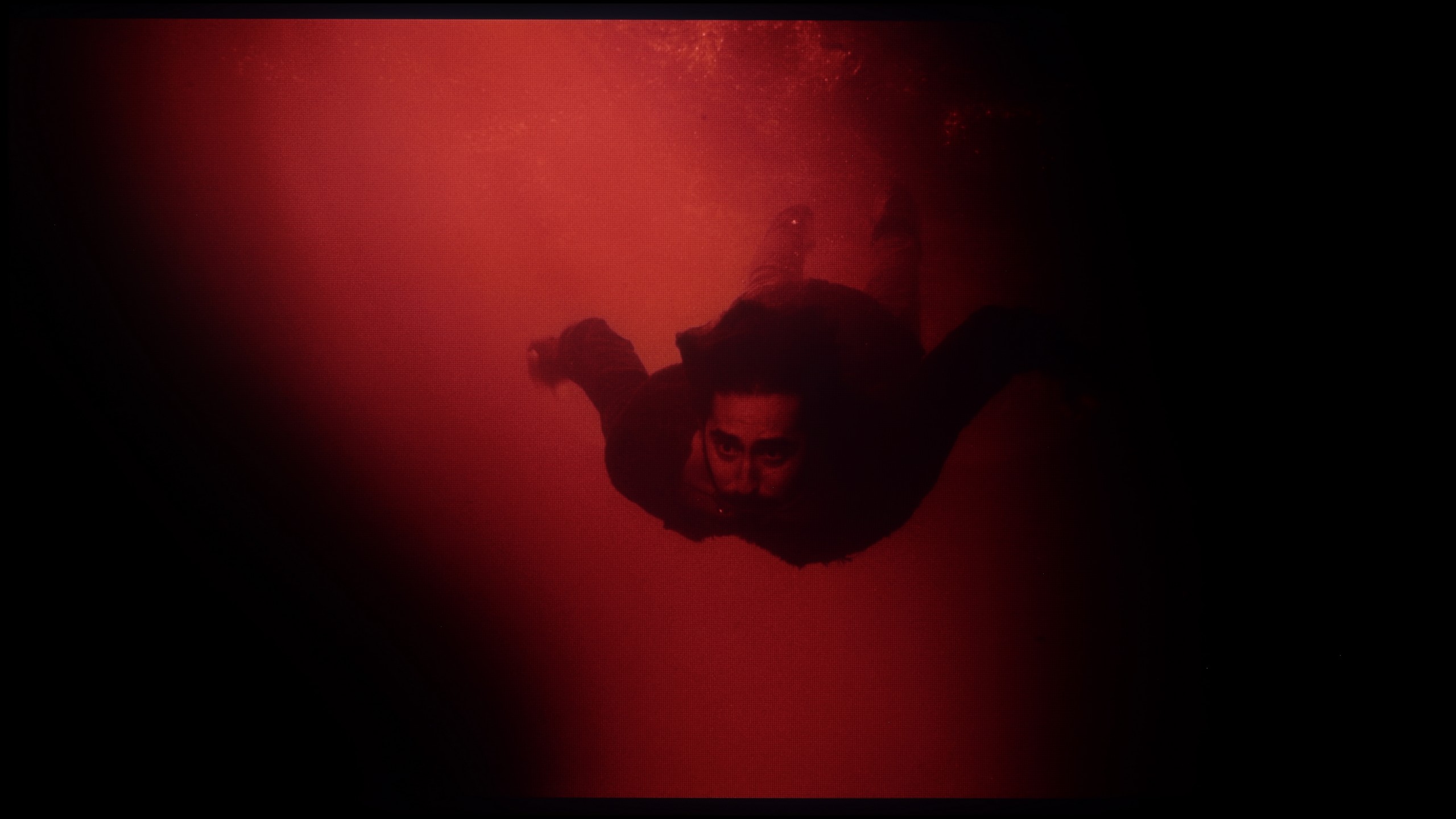




We must honestly admit that the fluidity of tonal transitions in this TV is right at the top of what we've had the opportunity to test in 2024. Even in really demanding scenes, we hardly notice any noticeable "steps" between colours. Yes, with a keen eye, one might spot some minor flaws, but that's at a level that's almost microscopic. You really need to have a very "alert" eye to catch them. This, in turn, means that when watching even the most complex shots in a full spectrum of colours, you can simply focus on the story and visual impressions without the annoying, artificial effect of posterization.
The U7Q PRO handles tonal transitions really well. Colours blend smoothly, with no banding, stripes, or strange artefacts. Even in tougher scenes that typically expose any imperfections – there was nothing to criticise here. The picture simply looks clean. The gradients – both colour and grey – are fluid, nothing tears, nothing distracts. It's one of those elements you don't notice while watching… certainly not with the U7Q PRO.
Image scaling and smoothness of tonal transitions
6/10
7/10
Smooth transition function

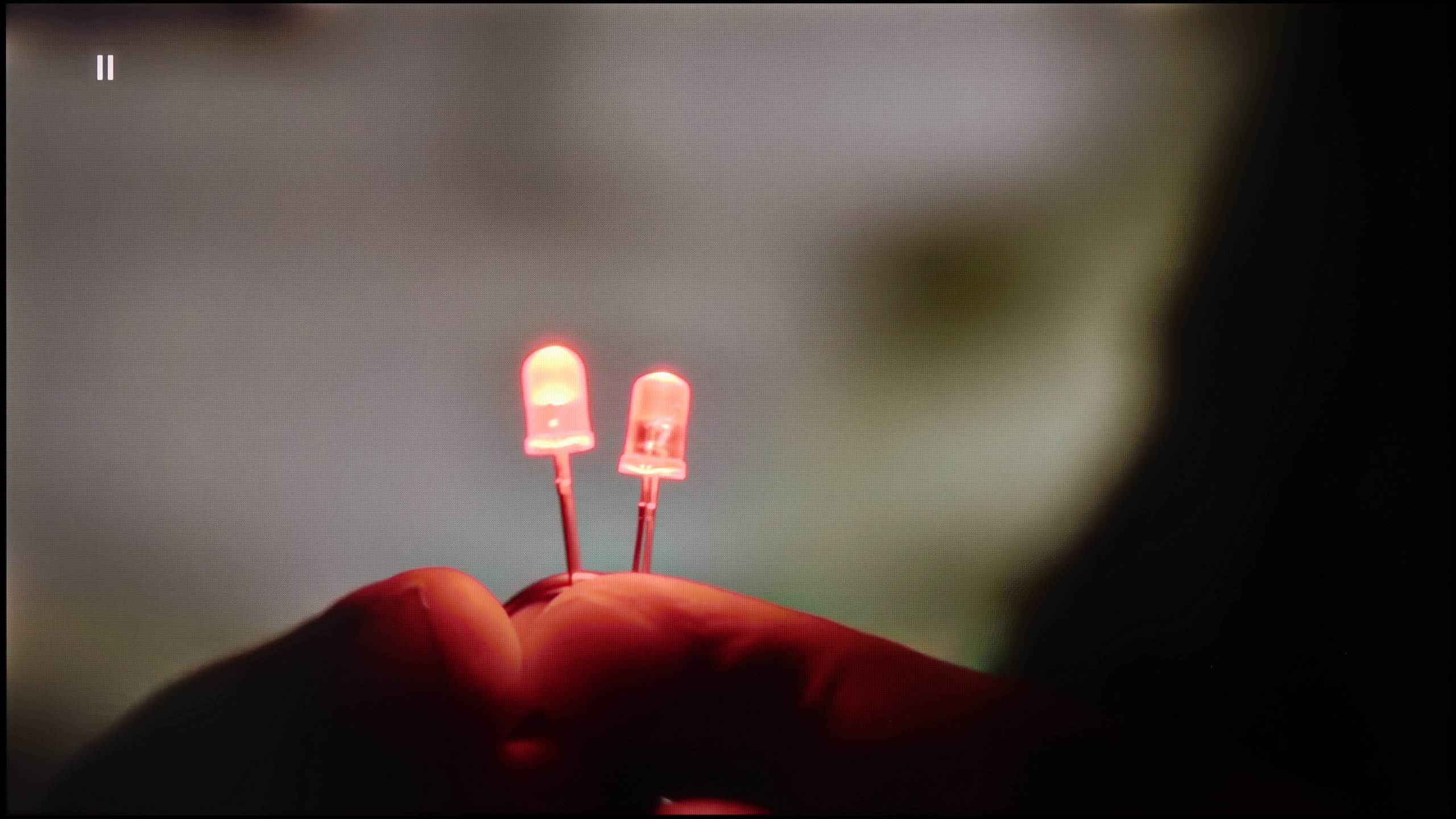
Image without overscan on the SD signal


When it comes to the tonal transition smoothing function in lower quality materials, the “smooth and gradient image” feature in Hisense E7NQ PRO unfortunately does not impress. At the lowest setting, the change is barely noticeable – it's more of a cosmetic improvement. Switching to “Medium” mode does produce a noticeable effect, but it's still nothing special, and the TV starts to excessively interfere with other elements of the image, which can look unnatural.
Image scaling is also rather average. On the test screen, where a portrait of a model and text are displayed, there are slight frays at the edges, making the overall presentation less smooth and aesthetic than we would expect in this class of device. It's just hard to talk about really effective improvement of lower resolution quality here.
If someone happens to come across older materials where the banding issue arises – Hisense has a solution for that. In the U7Q PRO, we find a feature called "Smooth and Gradient Picture". Set to the "Medium" level, it works really well – eliminating most gradient problems without smoothing the entire image like a blur in Photoshop. 😉 Film grain remains, details don't disappear – that's exactly how it should work. Well done on the implementation!
As for scaling weaker materials, it's simply good. It's not at the level of the most expensive TVs with advanced upscaling, but older content looks good. There is some minor banding at very low resolutions, but that's perfectly normal and hard to avoid. On the plus side – even with the oldest materials, there is no overscan effect, the image isn't cropped or artificially stretched.
Blur and motion smoothness
7/10
7.5/10

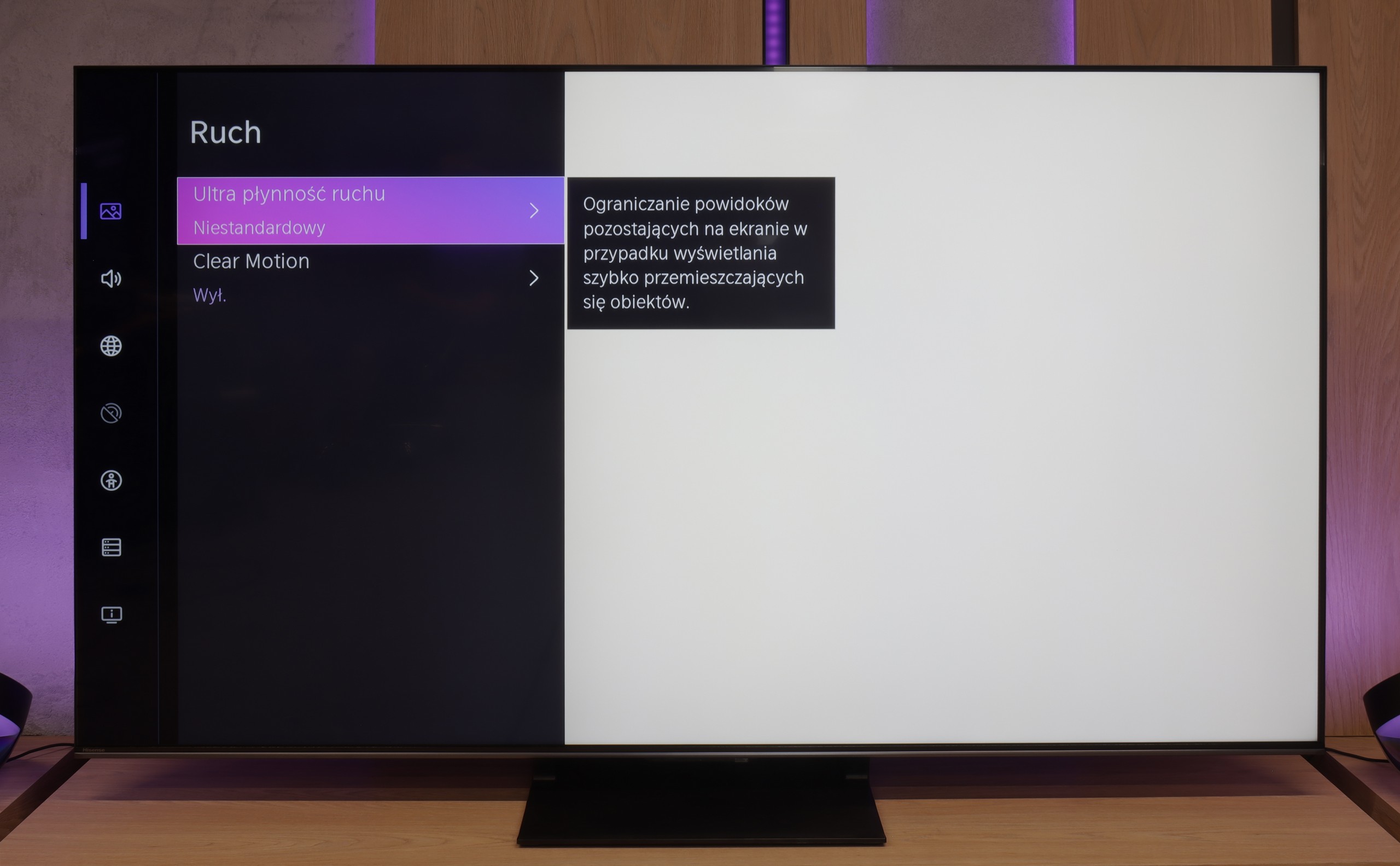
Blur (native resolution, maximum refresh rate):




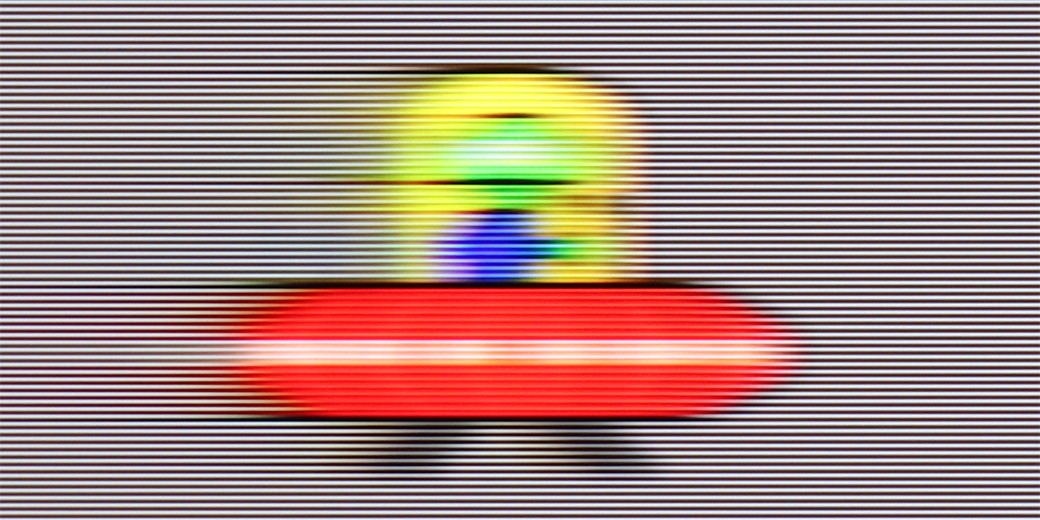
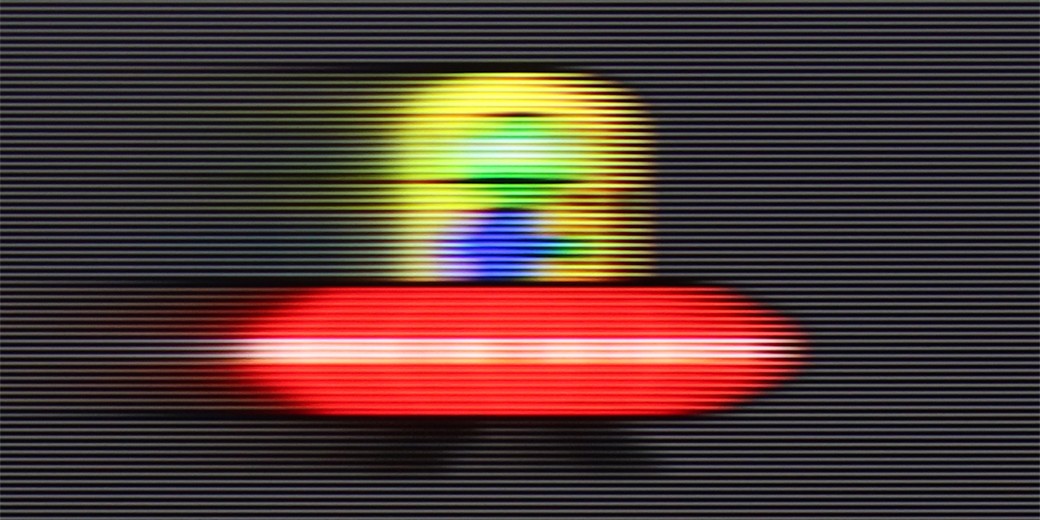
Blur (BFI function enabled):



Smużenie ():
Smużenie (1080p 288Hz):


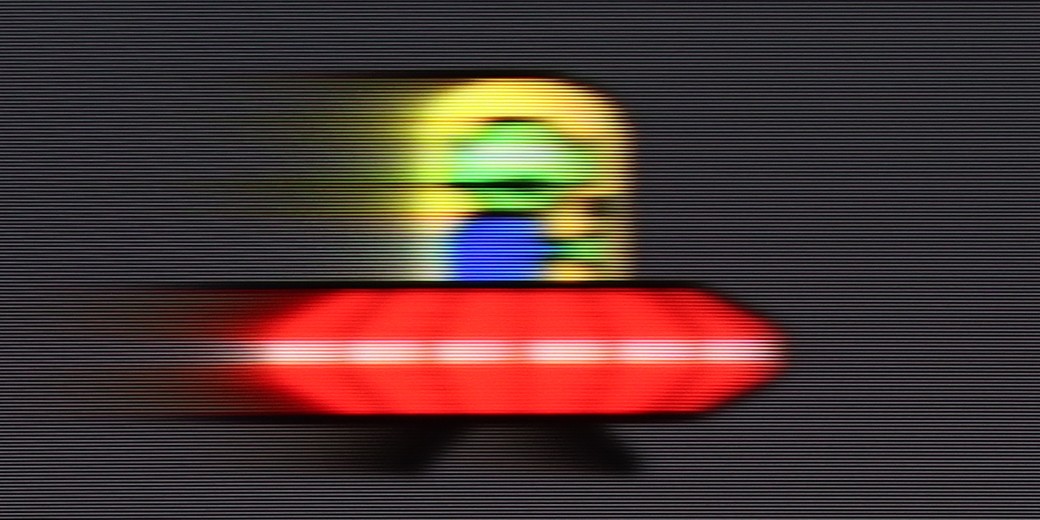
Thanks to the use of a 144 Hz panel, E7NQ PRO performs exceptionally well with almost any type of content. Whether we're watching fast-paced matches, dynamic games or action films – the fluidity of motion leaves a good impression. When it comes to movies, the manufacturer has equipped the TV with two key tools: “motion blur reduction” and “judder reduction.” Each of these functions can be adjusted on a scale from 1 to 10.
At lower values, the processing is subtle, barely noticeable, and gently smooths motion without ruining the cinematic character of the image. The higher we move up the scale, the more clearly the TV interferes with the presented material, smoothing motion more aggressively, thereby minimising any judders or micro-cuts. Conversely, the highest settings can resemble the so-called “soap opera effect,” which makes the image look overly smooth, slightly losing its cinematic atmosphere. Thanks to this scale, however, we can find a happy medium, adjusting motion fluidity to our own preferences.
“Speed” – this word was most frequently mentioned during our tests of the U7Q PRO. The television is equipped with a 165 Hz panel, which in itself is impressive – especially considering we’re talking about a mid-range model. Of course, PC gamers will benefit the most from its full capabilities, but even during everyday viewing, it’s clear that this is a fast and efficient panel. Like most modern televisions, the U7Q PRO can also enhance the smoothness of films that were originally recorded at 24 frames. In the menu, we find a slider that allows us to adjust the effect to our own preferences – from a more cinematic feel, with subtle motion, to a stronger smoothing with the characteristic “soap opera effect.”
Console compatibility and gaming features
8.5/10
8.5/10
- ALLM
- VRR
- VRR range48 - 144Hz48 - 288Hz
- Dolby Vision Game Mode
- Correct implementation of HGIG
- 1080p@120Hz
- 1440p@120Hz
- 4K@120Hz
- Game bar

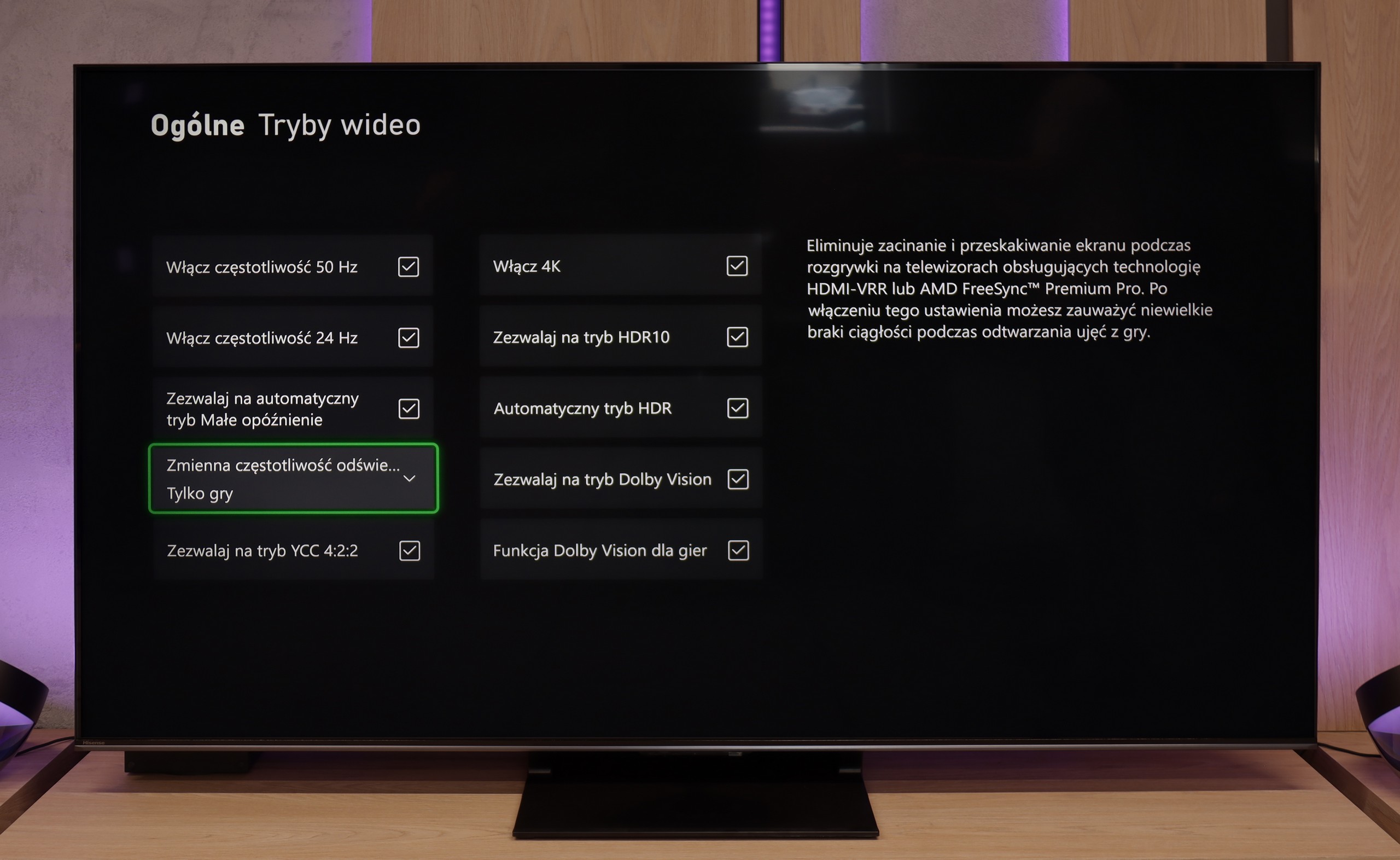



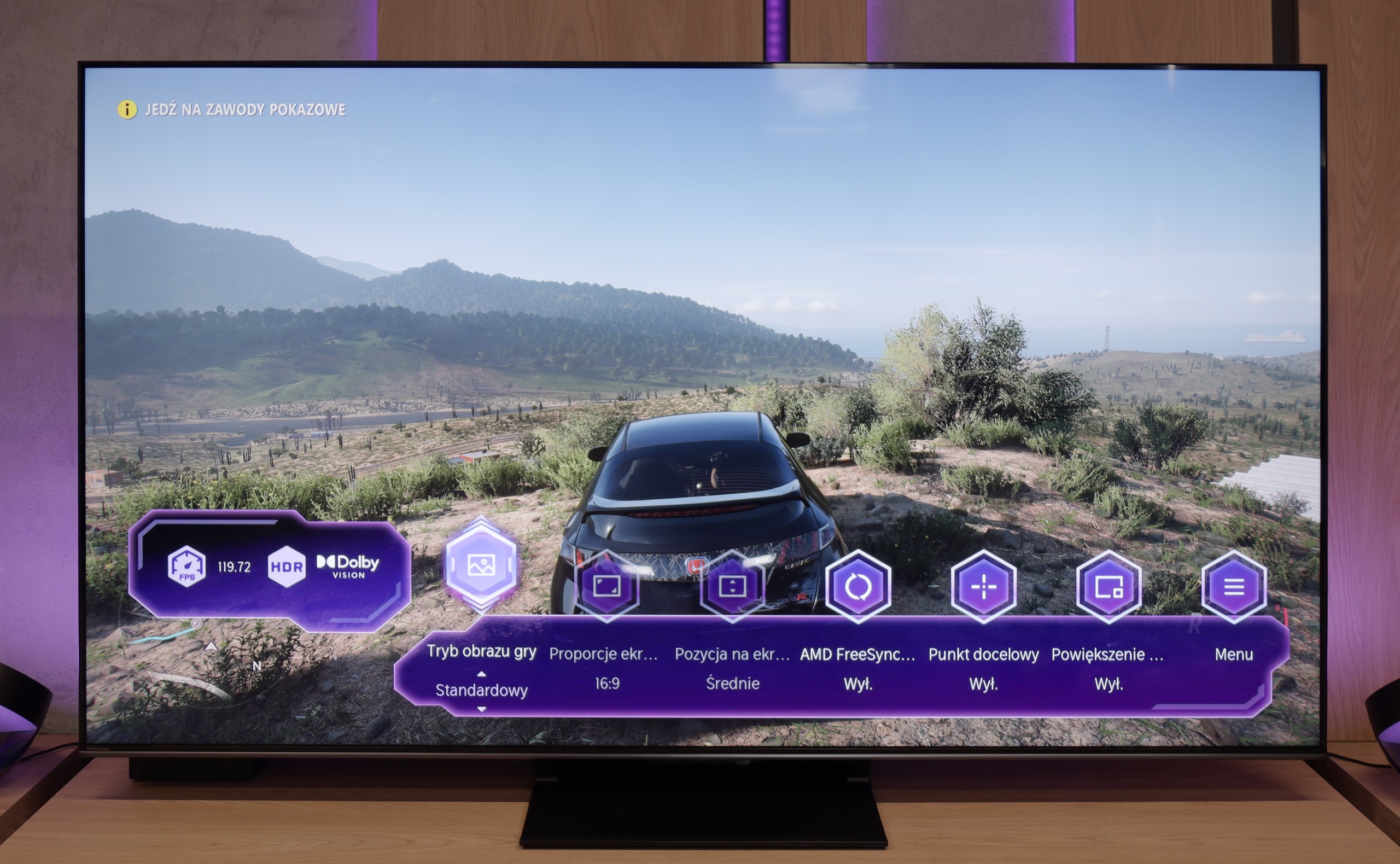

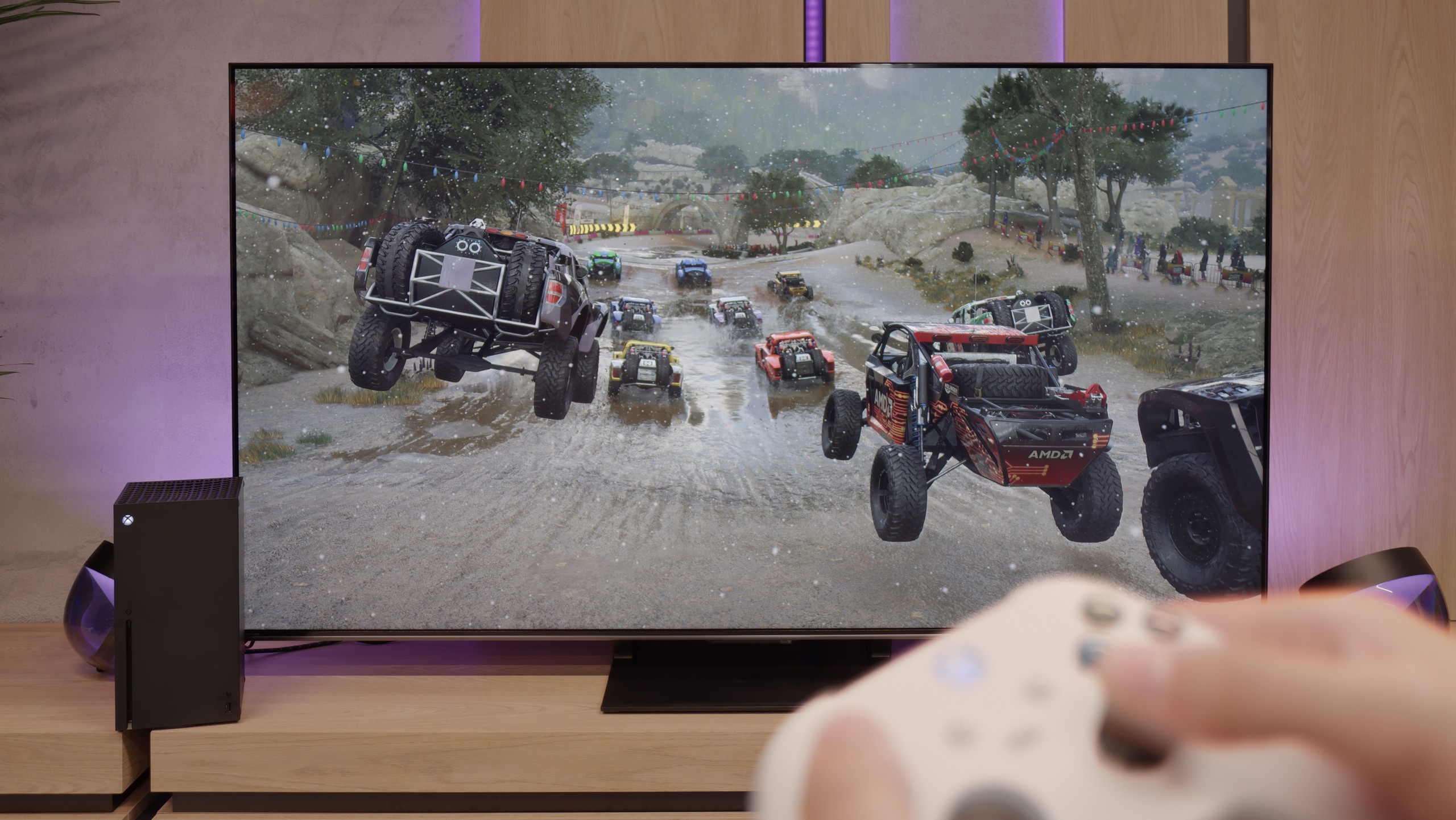
If we sometimes like to turn on the console and immerse ourselves in the world of games for long hours, E7NQ PRO can make a really good impression. Thanks to the 144 Hz refresh rate, the gameplay is surprisingly smooth, and support for HDMI 2.1 and VRR ensures that the image doesn't "tear" even during the most dynamic actions. Additionally, there's ALLM, which automatically sets the lowest latency as soon as we switch to the console – so we don’t have to fiddle around in the options ourselves.
A big plus is also the ability to launch games in Dolby Vision, which makes colors and contrast simply look better. Hisense has also included a clear "gamebar," allowing us to continuously monitor the key parameters and change settings without leaving the game. The only thing we might slightly regret is the lack of HGIG support. It may not be a crucial element, but for some gamers, it can matter if they aim for the most faithful reproduction of the creators' vision. Nevertheless, in practice, the E7NQ PRO performs excellently and delivers truly enjoyable gaming experiences.
Hisense U7Q PRO is a TV that seems to have been designed with gamers in mind. We have practically everything that can be expected from a gaming screen: variable refresh rate (VRR), automatic mode (ALLM), and as many as four HDMI 2.1b ports with full bandwidth of 48 Gb/s. Additionally, there’s a clear and quite functional Game Bar, as well as a well-implemented Dolby Vision GAMING mode that works seamlessly with Xbox Series S and X consoles.
Sounds like the ideal? Well, almost. Unfortunately, Hisense has still not implemented the HGiG feature, which is the system's tone mapping limitation on the TV's end. This means that when configuring HDR brightness on the console, we do it “by eye” or look for settings in online guides, as the screen does not display its actual brightness range. It’s a shame – because HGiG makes it easier to match the console to the TV and helps avoid overexposed or too dark scenes in HDR games.
Fortunately, the other elements work very well. Input lag is low, responsiveness is excellent, and the handling of other features is faultless. And although not everything worked perfectly, the U7Q PRO can still be confidently recommended to gamers.
Input lag
9.9/10
9.8/10
SDR
HDR
Dolby Vision
In this regard, Hisense E7NQ PRO really performs well. At a frequency of 60 Hz, we recorded around 15 ms, and at 120 Hz, the input lag drops to as low as 6 ms, allowing for very quick reactions and smooth controls in games. It's also worth mentioning that even in Dolby Vision mode, the input lag doesn't drastically increase. This means we can enjoy better image quality without sacrificing responsiveness, which will definitely please any avid gamer.
In terms of signal delay, the Hisense U7Q PRO performs exceptionally well. For 120 Hz content, the input lag stays below 10 ms, which translates to a lightning-fast response – the screen almost instantly reacts to our movements, something console and PC gamers will particularly appreciate. With 60 Hz content, the situation looks a bit worse, as the response time doubles – this is natural and applies to virtually all televisions. Nevertheless, it still remains below 20 ms, which can be confidently regarded as a very good result, almost close to perfection – and in practice, it’s hard to feel this during gaming.
Compatibility with PC
7.6/10
8.2/10

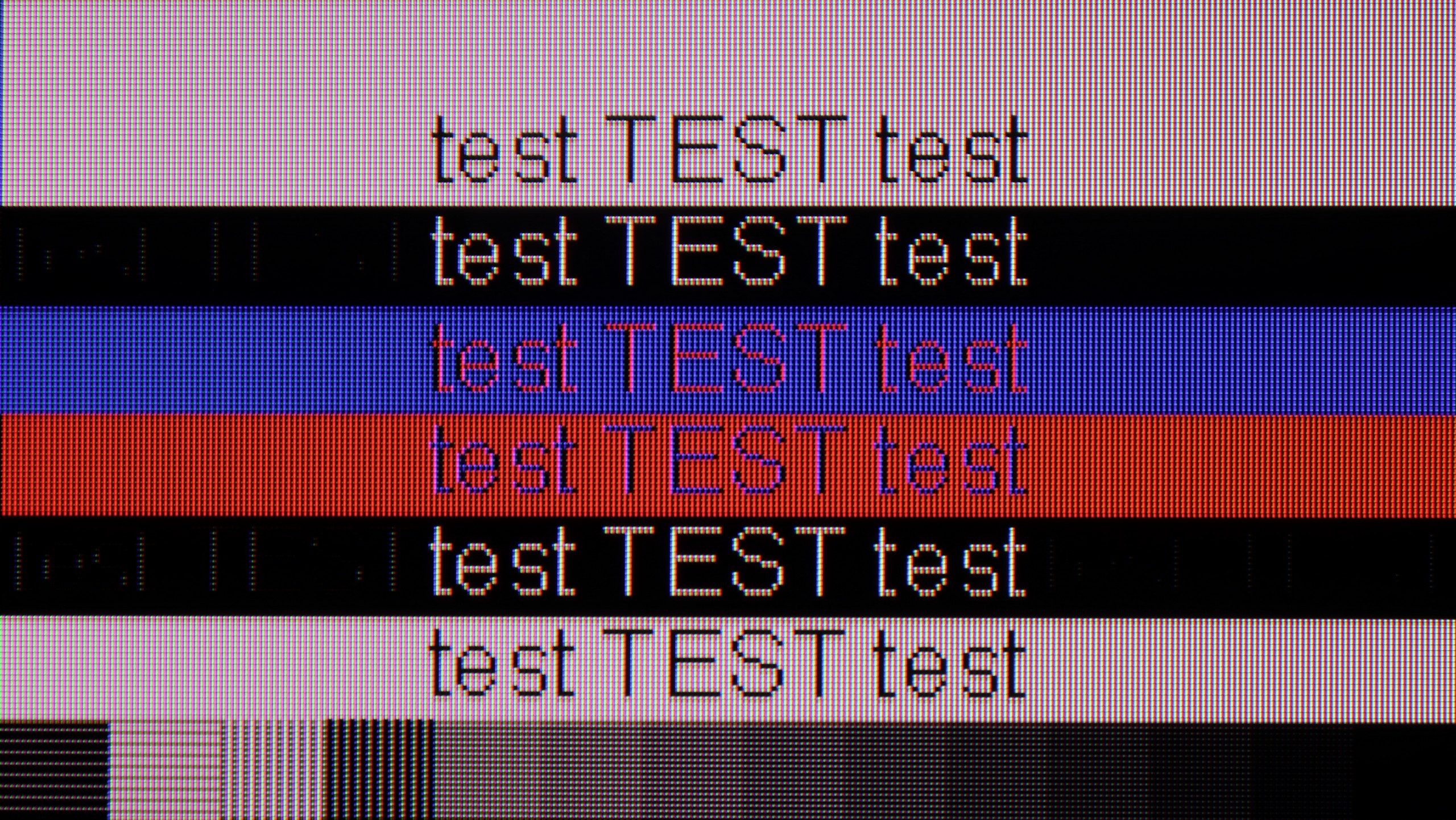
Connecting E7NQ PRO to a computer will give us no reasons to complain. Overall readability of fonts is quite good, although with very thin horizontal lines (the so-called "roofs" of letters), we noticed a slight dimming. It’s not a big issue, but worth mentioning if we plan to spend long hours in text editors or browsing the web.
On the other hand, when it comes to gaming on PC, the TV shows its true colours. Support for G-Sync, connection to a 144 Hz panel, and low input lag ensure that even the most demanding titles run smoothly and responsively. As a result, we have a screen that works well not only with a console but also as a solid "window" into the world of PC entertainment.
Playing on a PC with the Hisense U7Q PRO is pure fun. Low input lag, a full 165 Hz in 4K and even 288 Hz in Full HD – these are numbers we wouldn't expect from a TV at this price. In this regard, it's really hard to nitpick. If someone is looking for a large screen for gaming from a PC – the U7Q PRO can confidently serve as a monitor. It performs a bit worse for everyday text work. Although chroma 4:4:4 is present, so theoretically, everything should look good. But in practice, grey text on a dark background looks strange – vertical lines are sharp, but horizontal ones can blur, disappear, or look slightly dimmed. However, it's fair to add that if you use the TV as usual – that is, from a few metres away – you're unlikely to notice this. The issue only becomes apparent when someone places the U7Q PRO on a desk, a metre from their face, and starts working with text or spreadsheets. If you plan to use it in this way – it’s worth keeping this in mind.
Viewing angles
6.5/10
3/10
In the case of Hisense E7NQ PRO, viewing angles are definitely a strong point, thanks to the IPS panel. This means that when we look at the screen even from a significant angle, the colours and brightness do not "drop off" as much as they do in TVs with VA panels. Of course, compared to OLED or QD-OLED screens, where the image remains virtually unchanged from any side, IPS still comes up short. Nevertheless, among LCD TVs, it is difficult to find a solution that guarantees such good viewing angles as those offered by IPS. Unfortunately, everything has its price – in this case, one must come to terms with average black levels and lower contrast.
In this regard, the U7Q PRO performs averagely. The television is equipped with a VA panel, which is not known for its wide viewing angles. When you start looking at the screen at an angle, the image clearly loses brightness and the colours start to fade. This is a completely normal phenomenon in VA panels without additional coatings to widen the angles – so if you plan to watch from the side or with a larger group, it's worth keeping this in mind. On the other hand, head-on – the image looks great, with deep blacks and very good contrast, much better than on IPS/ADS panels.
TV efficiency during daytime
6.2/10
6.2/10




Matrix brightness
Average luminance SDR
Hisense U7Q PRO: 472 cd/m2
Hisense E7NQ PRO: 478 cd/m2
On a bright day, E7NQ PRO performs quite well. The "satin" panel diffuses light effectively, so reflections and glare don't turn into distracting "spots" on the screen. With average brightness at around 500 cd/m², you can comfortably watch television in a sunlit room without much struggle to see details or clear content. It may not reach the level of the top premium models, but in everyday use, it still performs pretty decently.
As we mentioned earlier – the U7Q PRO is a really bright TV, especially when it comes to HDR content. For SDR materials, the TV dims a bit, but an average brightness level of around 500 nits is still a very solid result. This means you can easily watch TV or movies even in quite a bright room. Only under very extreme lighting – like direct strong sunlight on the screen – can visibility suffer a bit. Fortunately, Hisense has applied a satin anti-reflective coating that effectively reduces reflections, and the blacks maintain their depth even during the day. This makes a difference and allows for comfortable use of the TV in various lighting conditions.
Details about the matrix
Subpixel Structure:

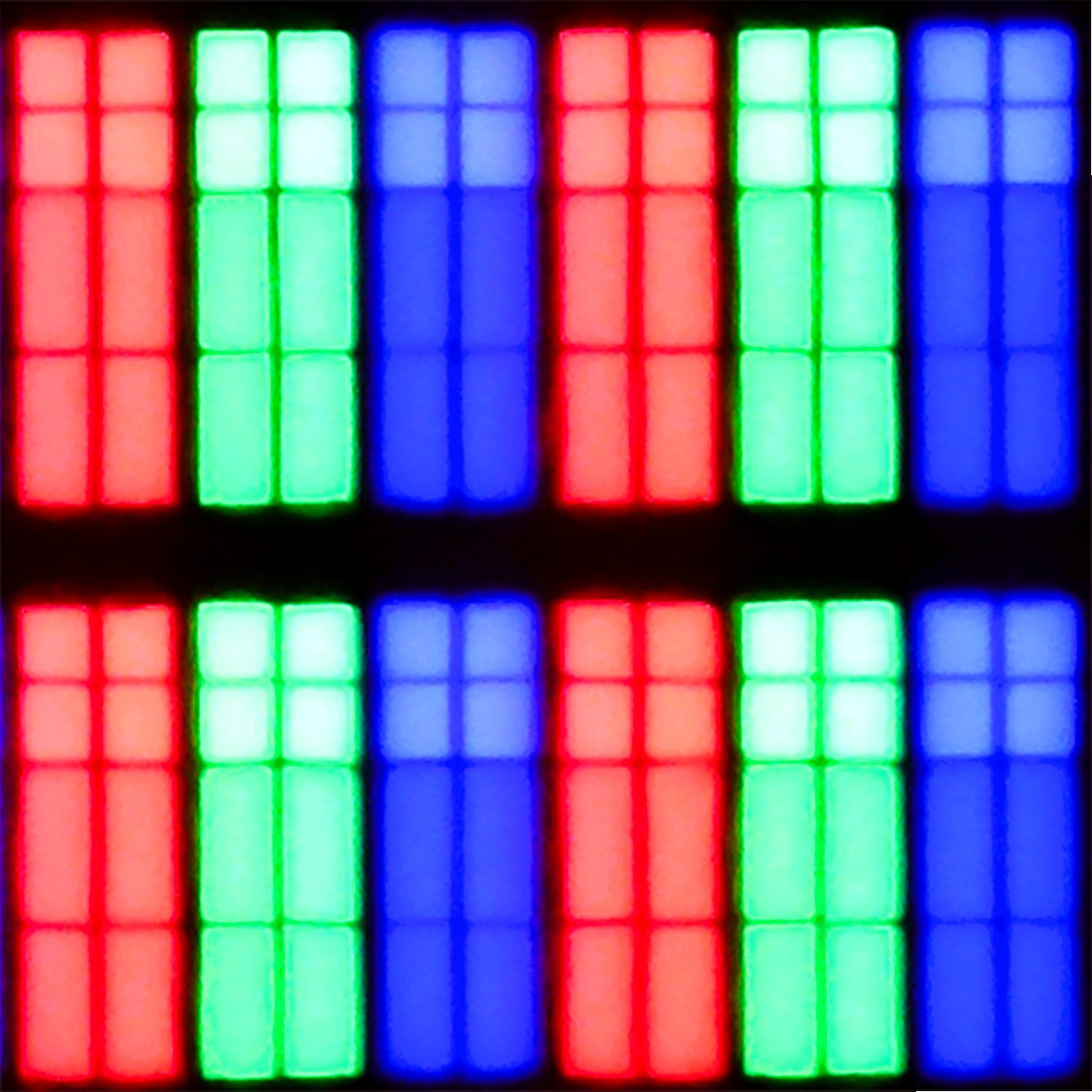
Panel uniformity:

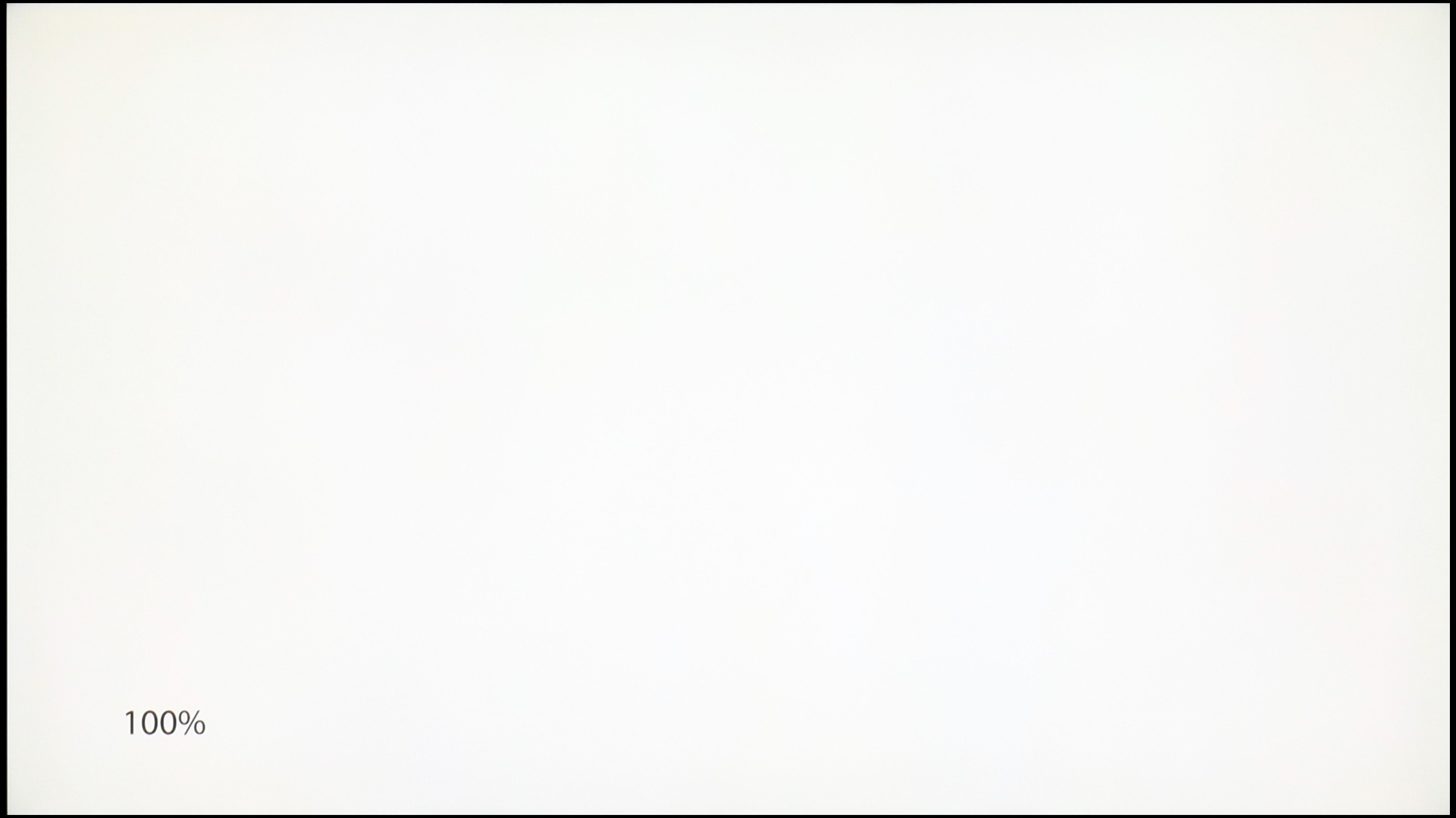
Hisense E7NQ PRO
Hisense U7Q PRO
TV features
8.9/10
9.4/10
- HDMI inputs2 x HDMI 2.0, 2 x HDMI 2.1 48Gbps0 x HDMI 2.0, 4 x HDMI 2.1 48Gbps
- Other inputsRCA (Chinch)RCA (Chinch)
- OutputsToslink (Optical audio), eARC (HDMI), ARC (HDMI), Mini-Jack (Headphones)Toslink (Optical audio), eARC (HDMI), ARC (HDMI), Mini-Jack (Headphones)
- Network InterfacesWi-Fi 2.4GHz, Wi-Fi 5GHz, Ethernet (LAN) 100MbpsWi-Fi 2.4GHz, Wi-Fi 5GHz, Ethernet (LAN) 100Mbps
- TV receptionDVB-T, DVB-T2, DVB-S, DVB-S2, DVB-CDVB-T, DVB-T2, DVB-S, DVB-S2, DVB-C
Classic features:
- Recording to USB (terrestrial TV)
- Recording programming
- Picture in Picture (PiP)
- RF remote control (no need to aim at the screen)
- Backlit remote control
- Teletext
- Audio only mode
- Possibility to connect Bluetooth headphones to the TV
- Possibility to simultaneously use Bluetooth headphones and the TV speaker
Smart features:
- AirPlay
- Screen mirroring (Windows Miracast)
- Wyszukiwanie głosowe
- Voice search in native language
- Ability to connect a keyboard and mouse


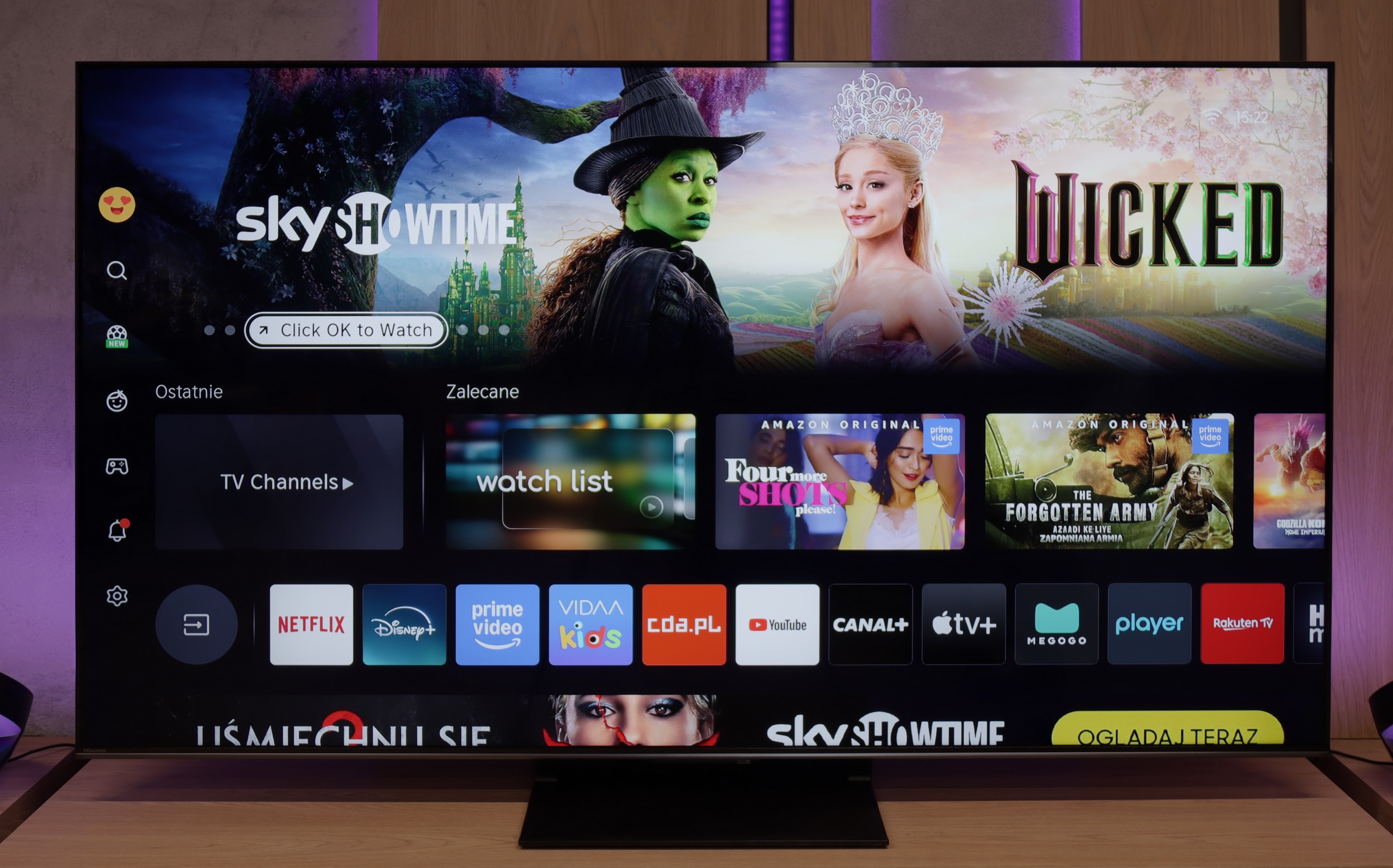
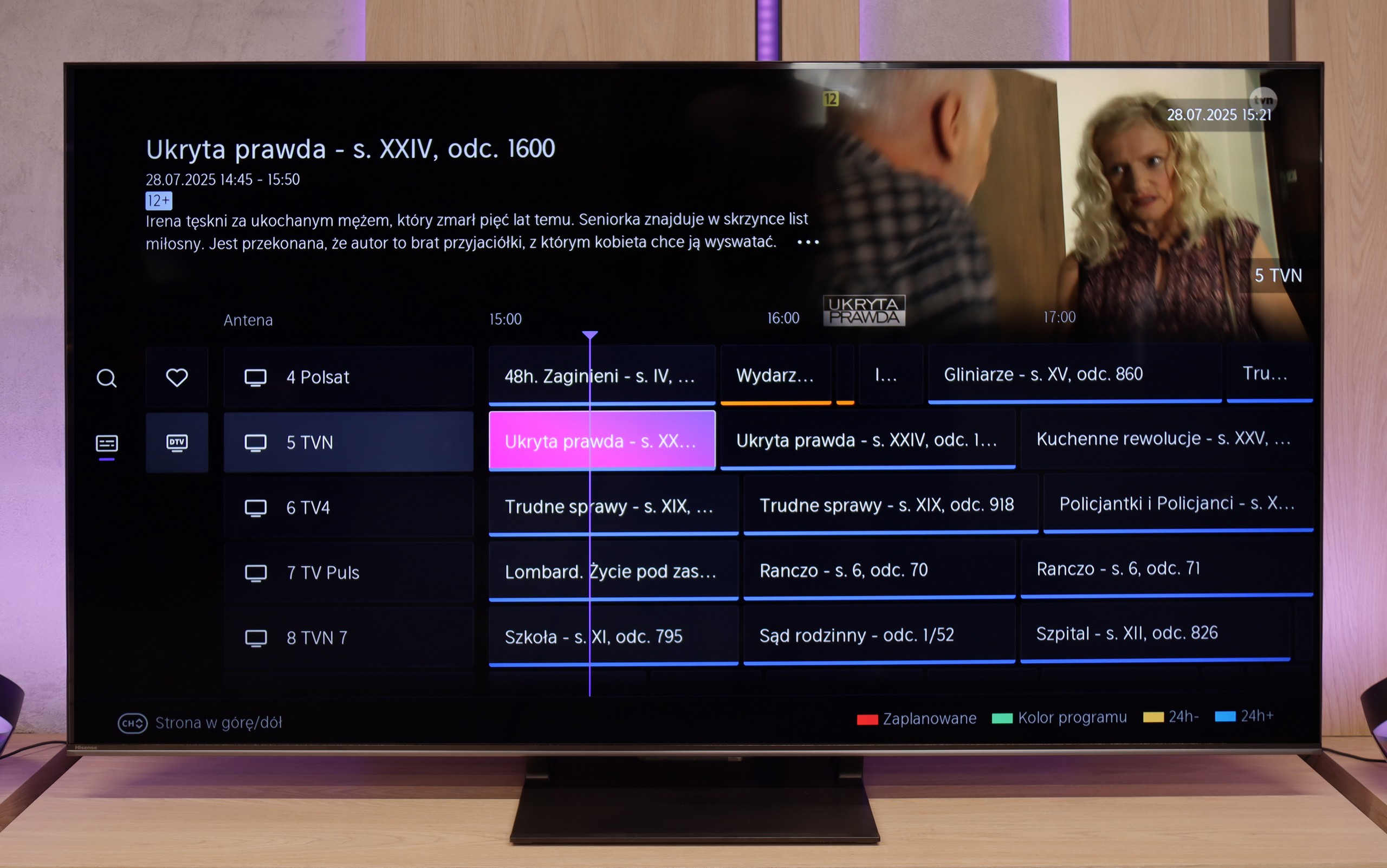
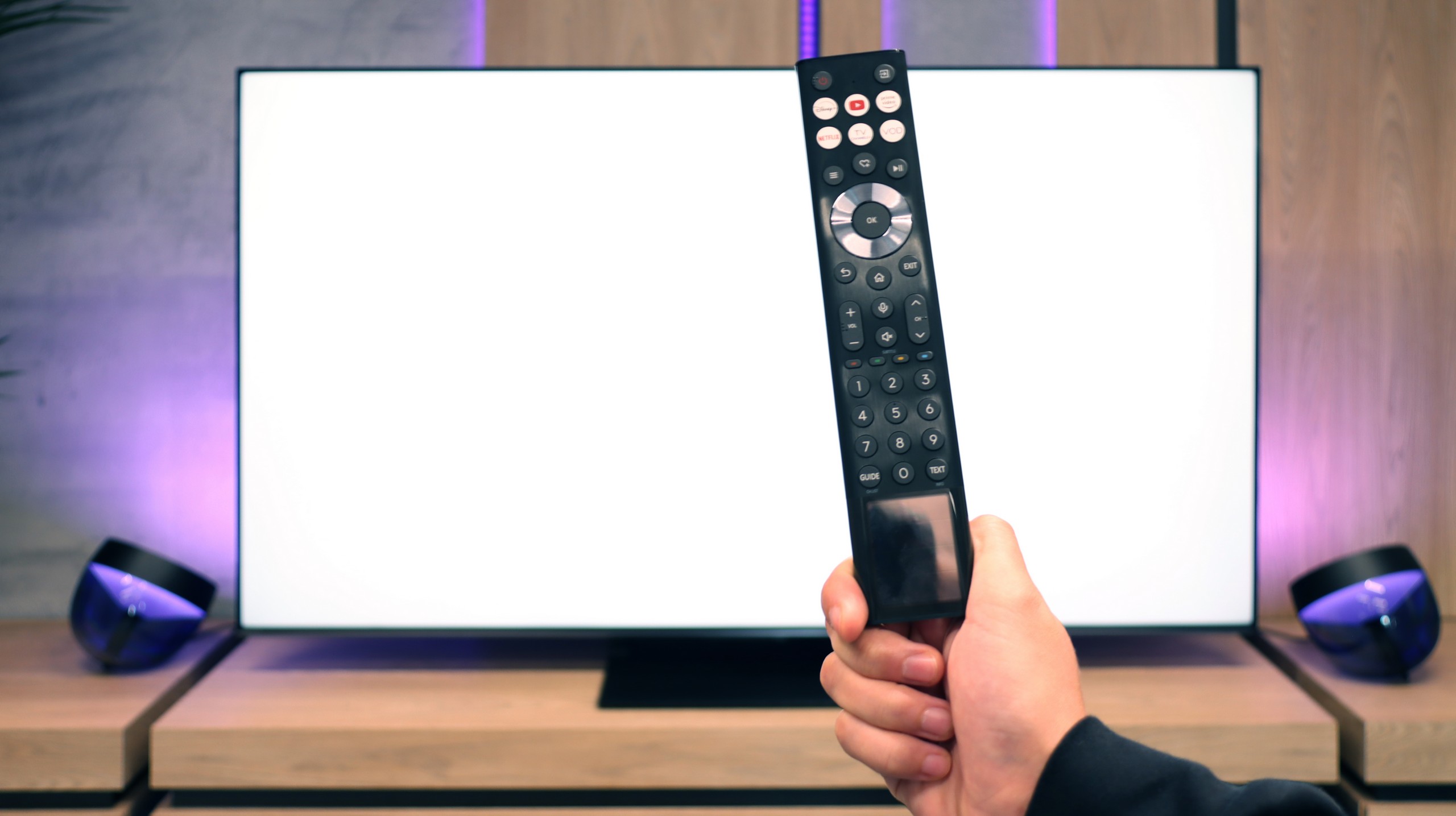

Hisense E7NQ PRO operates on the VIDAA system, which has recently made significant progress. You'll find most popular applications here, although unfortunately, some music platforms, such as Spotify and Tidal, are missing. Nevertheless, navigating the menu is quite pleasant, and the responsiveness is at a satisfactory level. Yes, there are occasionally minor 'stutters', but it's not something that will ruin our experience of everyday use.
On the plus side, we can count on support for voice search in Polish, which makes it easier to find favourite content without the tedious typing of letters one by one. The TV also offers plenty of additional options: we can record programs, use AirPlay and mirroring, and enjoy extensive wireless connectivity features (Wi-Fi and Bluetooth). It may lack a backlit remote control or Picture-in-Picture (PiP) mode, but those are relatively niche features, so not many will actually feel their absence. In everyday use, we simply have a solid base of useful tools and convenient solutions.
Classic features of U7Q PRO
If you plan to use the television in a more "classic" way, that is, for watching daily programs or connecting headphones, the Hisense U7Q PRO has almost everything you could expect. The television easily supports recording to USB, you can connect headphones via Bluetooth, and the remote control is backlit, which is still not standard even in more expensive models. While many people today are foregoing these classic features in favour of streaming apps, it's good to know that the U7Q PRO still does this well and without compromises (aside from the lack of PiP functionality).
SmartTV System: Vidaa
When it comes to smart features, in Europe this model runs on the VIDAA system. The system operates smoothly, has a built-in web browser, supports voice control (also in Polish), and includes AirPlay, which will please users of Apple devices. However, it should be noted that VIDAA is a closed system, so you won't find all the popular apps that we've become accustomed to with Android TV or Google TV. Before purchasing, it's worth checking whether the apps you actually use are available.
Playing files from USB
5.2/10
8.2/10
Supported photo formats:
Maximum photo resolution:

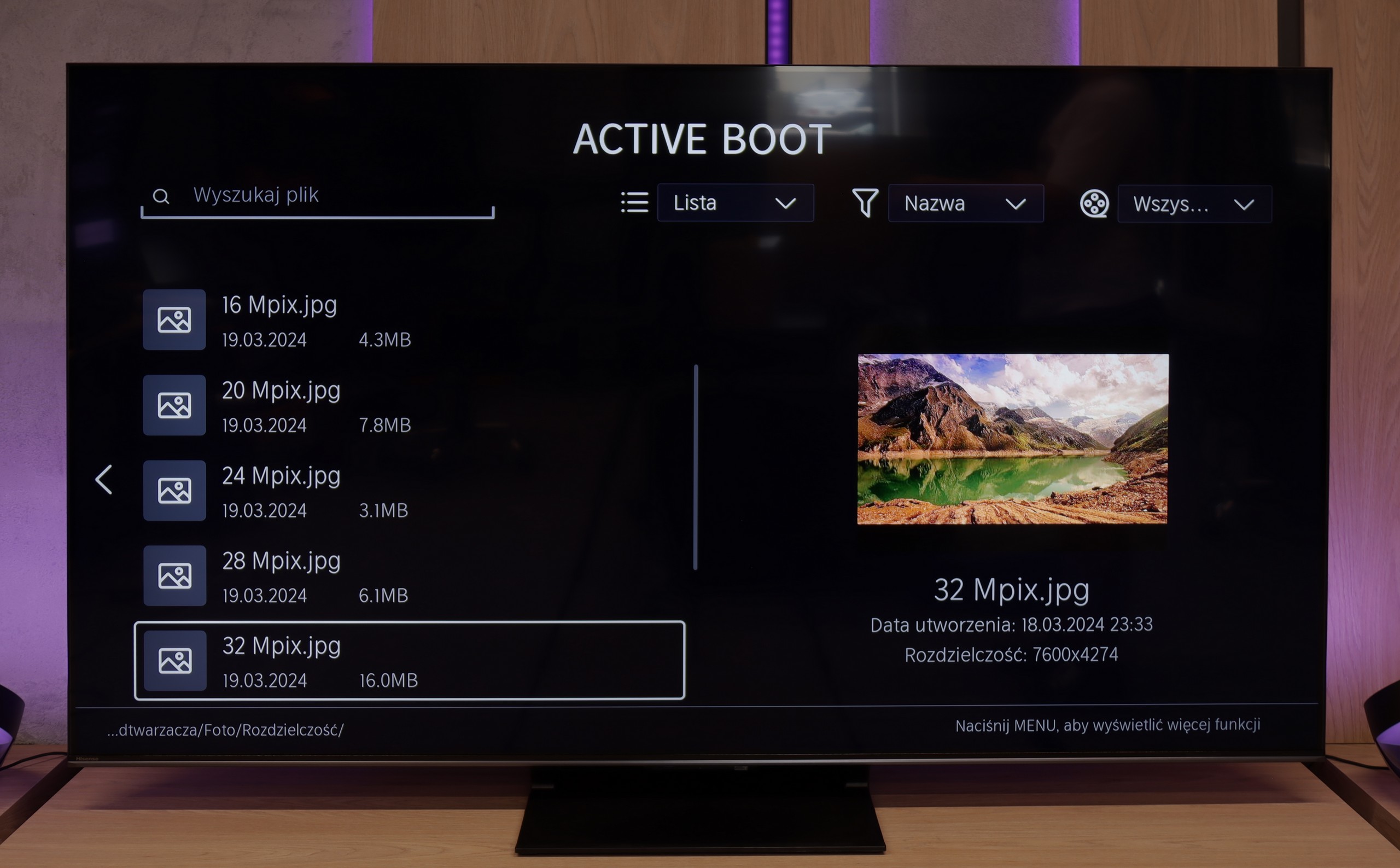
If we're counting on comfortable viewing of films with subtitles straight from a USB drive, we might unfortunately be disappointed. Just like in the previously tested A7NQ, here we encounter quite an odd situation: the TV doesn't display subtitles, even if we correctly place them on the storage device and try different formats. Paradoxically, we find options to change the colour and appearance of the font, but as they say – what's the point if we still can't see anything?
In the case of other files, such as photos or music, the E7NQ PRO manages without major issues, playing the most popular formats without a hitch. Unfortunately, for those wanting to use the TV as a multimedia player, the lack of functioning subtitles is a significant inconvenience.
The built-in media player in the VIDAA system worked very efficiently and seamlessly on our U7Q PRO unit. The television had no trouble reading external video and audio files, as well as subtitles, making it convenient to watch movies from a USB drive or external hard drive. Most popular formats worked flawlessly, so there was no need to convert anything. The only complaint is a certain selectiveness in handling high-resolution images – not all of them opened. Therefore, you will find a detailed list of supported image resolutions (Mpix) in our comparison table.
Apps
7.7/10
7.7/10














































Sound
7/10
7.8/10
- Subjective sound quality:7/107.8/10
- Dolby Digital Plus 7.1:
- Dolby True HD 7.1:
- Dolby Atmos in Dolby Digital Plus (JOC):
- Dolby Atmos in Dolby True HD:
- DTS:X in DTS-HD MA:
- DTS-HD Master Audio:
When it comes to the built-in speakers, Hisense E7NQ PRO pleasantly surprised us. Of course, it's not on the level of a decent soundbar or home cinema setup, but in everyday conditions, it performs really quite well. During our tests, the dialogue remained clear, and the sound was sufficiently clean and spacious that we didn't feel the need to immediately invest in additional audio equipment.
The support for multiple audio formats is also a plus – from Dolby Atmos to the less common DTS:X. This means that if we come across suitable source materials, we can count on a more immersive, spatial experience. Although in terms of sound, it still mainly remains at the level of a decent baseline, Hisense E7NQ PRO should satisfy most users who simply want to turn on the TV and hear clear, uninterrupted audio.
For built-in TV speakers, the U7Q PRO sounds surprisingly good. The audio is clear, with distinct mid and high tones, and while the bass is somewhat limited, it doesn’t completely disappear. One could say that for "TV speakers," the level is more than satisfactory. However, it’s worth noting that in our test unit, we couldn't play DTS:X audio from local files – the TV simply doesn’t support it. This means that if you’re counting on a cinematic surround effect solely from its built-in speakers, there might be a bit of a letdown. Thankfully, the TV seamlessly transmits DTS signals to an external amplifier, so if you have a home theatre – just connect it up and everything works as it should.


